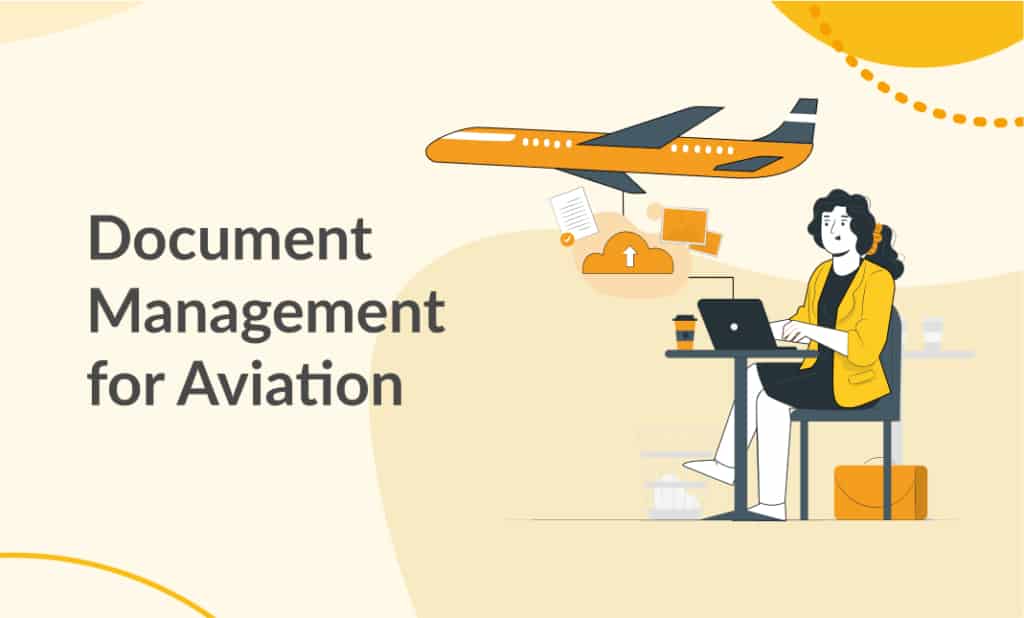
Statistically speaking, flying is the safest form of travel. This is because of the rigorous regulations, training, certifications, and checks that go into every single flight, making it one of the most data-driven travel industries in the world. Which makes it extremely important for us to ensure proper document management for aviation.
The main objectives of document management for aviation are:
- Having the right information available immediately.
- Encouraging compliance and process ownership throughout the system.
- Having a reliable system to process any changes, approvals, etc.
- Ensuring the right people have access to the required information.
- Ensuring logs are updated and records are maintained regularly.
Immediate Access to information
A proper aviation document management system will allow for immediate access to information as/when needed. In the aviation industry, having all data readily available is what keeps things in check. The number of checks a plane goes through just before it is cleared to even leave the hangar is a herculean feat of data collection, all the relevant people must have access to that data. It is equally important that this data not be made public, for obvious safety and security reasons. A good document management system will ensure that all the relevant information is accessible by the right people. This access will come in tiers. The first tier will be people who can add/remove data, such as the engineers and crew, the second tier will be people who need to see the data as read-only, but don’t need to modify it, such as the control tower, and then there’s everyone else who has no business even looking at this data, much less interacting with it, those users won’t even know this content exists.
The surefire way of making this data accessible is to have it on a ubiquitous system that is just as accessible from a computer from where a plane is taking off as it is from a phone where the plane is landing. This independence of the system or platform will ensure that the data is available regardless of the platform.
Secure System
The one thing airline information cannot be is open-ended. Due to obvious security and safety factors, only a limited amount of information can be made public. Meanwhile, other information is for specific eyes only. To ensure this, the storage system needs to be protected under 256-bit bank-level encryption and use SSL encryption to transfer data ensuring that no content is accessed by any unauthorized users.
Additionally, all the information needs to be backed up in triplicate on the cloud (aside from any offline copies) to ensure that the data remain accessible no matter what level of calamity may befall.
Regulatory Compliance
All airlines are well versed in frequent auditing, as that is precisely what makes them safe. Everything from the machinery to the people has to be frequently checked. If any of this audit even hints at the idea that a flight might not perform within acceptable margins, it is grounded until the issue is fixed and a follow-up audit is conducted.
This complex chain of documents and data need to be accessible at all times by all the relevant people, for that reason a powerful OCR (optical character recognition) based search can help you immediately sift through all forms of information, be it digital, or read-only, like images, PDFs, scans, etc. So you can have as much information as you need as soon as you need it.
This way, you can have OEM compliance records and checks uploaded to the system, accessible by all the relevant people. Once an audit is complete, a report can be shared with the signatories who can approve it using Folderit’s approval system that can grant approvals either all at once or one-by-one.
Moreover, using Folderit’s audit trail, you can ensure that all the necessary people have checked the document as it keeps a record of which user accessed which file and at what time. This way, you know your operations are up and running without any conflicts.
Conclusion
Airlines have a series of documentation checks built-in to the operation, a system that supports these processes is a system that can help streamline the flow of data.



